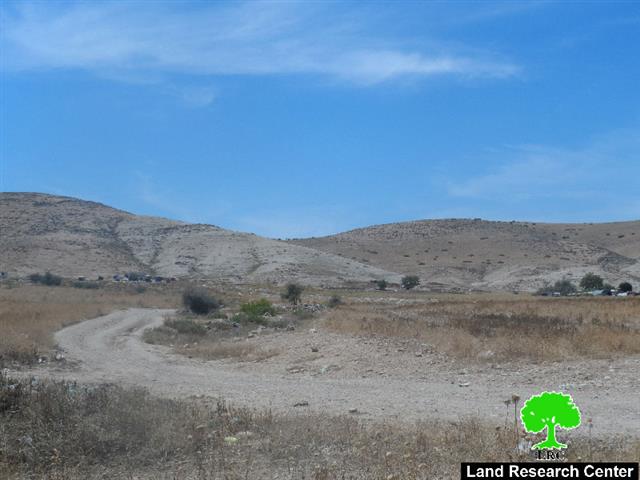Violation: an agricultural road notified of stop work
Date: May13, 2014
Location: the northern part of the Jordan Valley
Perpetrators: the Planning Committee the Israeli Civil Administration
Victims: residents of Ras al-Ahmar community
Details:
The Planning Committee the Israeli Civil Administration served the village council of Khirbet Atouf a stop work order under the military no. of 160620 requesting to terminate rehabilitating the agricultural road that links Khirbet Atouf and Ras al-Ahmar east of Tubas. The pretext came under unlicensed construction within areas classified “C” according to Oslo Accords.
The notified road is indicated to be of 2km in length. It is in need to be rehabilitated to best provide services for the two Bedouin communities, east of Tubas governorate. Ras al-Ahmar, reached only by the aforementioned road, is not acknowledged by the Israeli occupation
Photo1: the targeted road
Photo 2: aerial photo of the location
The legal consultant of Tubas governorate Mohammad Mallah, to the LRC observer stated that: “the road is relatively ancient; it was until recently a narrow rough agricultural road. Two months earlier, the village council of Khirbet Atouf managed obtaining a fund from the UN to rehabilitate it, much to the dismay of the Civil Administration that notified the road”.
In the regard to the place importance, the chairman of the village council Abdallah Bsharat stated that: “the road has a strategic importance since it served more than 250 people of the Khirbets and served a number of the agricultural lands in the nearby”.
It is mentioned that the occupation gave the residents until July10 as a final date to complete the licensing procedures, which comes in time with the Planning Committee of the Israeli occupation court session in Beit Eil in order to look at the eligibility of the road.
The Khirbet as a Bedouin community, located in the Palestinian part of the Jordan Valley, has the occupation eye on. Since the occupation of the West Bank in 1967, Israelis sat expelling citizens of the Palestinian part of the Jordan Valley and Judaizing that area as their main priorities. Evenly, the occupation considered the Palestinian part of the Jordan Valley as important as Jerusalem.
For the residents of the Khirbet who populate up to 137 people (17 families), all their structures were served stop work andor demolition orders. The usual pretext was the unlicensed construction within areas classified closed “Military Zones”. The area was and still the residing place of the Bedouin families who grazed their sheep and herds for years and years which is their only source of livingsustenance.
Prepared by
The Land Research Center
LRC
















